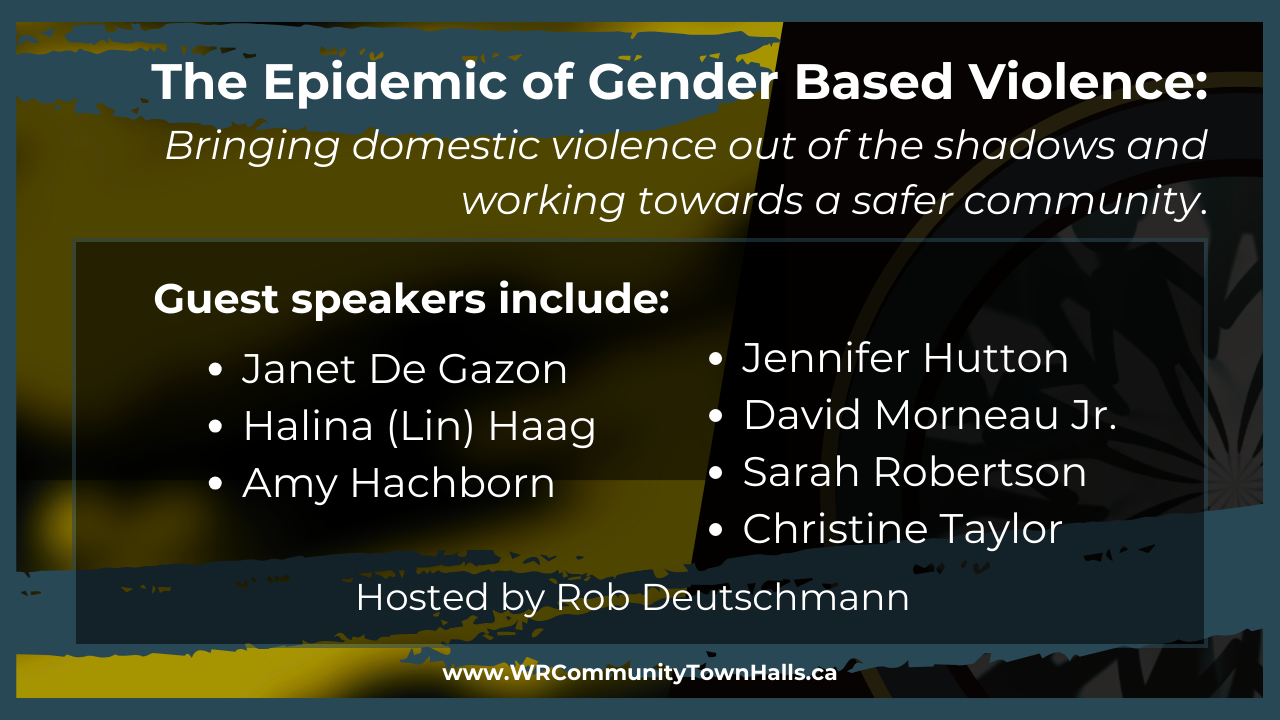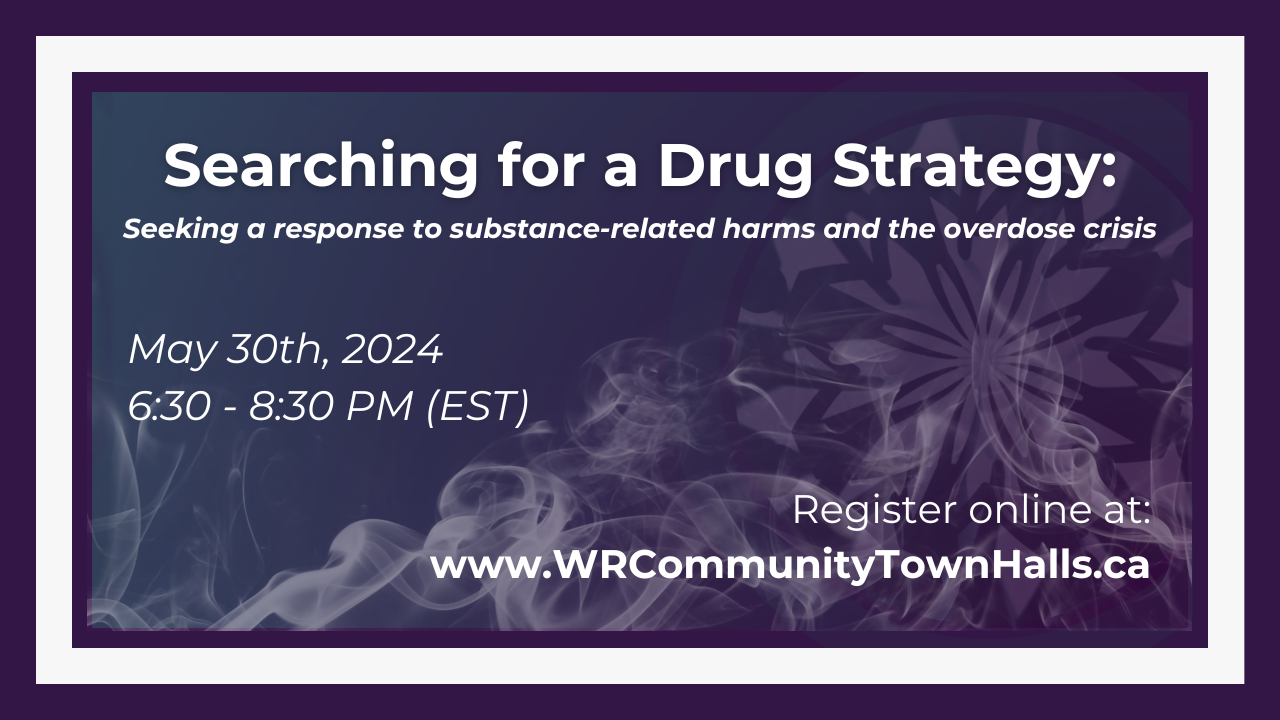Report
Introduction & Speakers
|
The recent panel discussion on gender-based violence, featuring insights from diverse experts, presented a compelling tapestry of perspectives on this pressing issue. The conversation, illuminating the multifaceted nature of intimate partner violence (IPV), highlighted key themes: the evolving landscape of IPV, the legal challenges and advancements, the critical role of support services, and the importance of empathy and understanding in addressing abuse.
|
Christine Taylor began by painting a stark picture of the current state of IPV, emphasising the alarming increase in the severity and frequency of cases. Her focus on the critical role of support services like Saint Mary's Hospital team in providing comprehensive care, including medical and counselling services, underscores the necessity of a holistic approach to IPV. Taylor’s insights highlighted the disturbing trend of serious, often debilitating injuries resulting from IPV, marking it as a public health crisis.
Jen Hutton, representing Women's Crisis Services of Waterloo Region, furthered this narrative by discussing the escalation in femicide rates, the societal costs of domestic violence, and the expansive role of her organization in providing shelter and outreach services. Hutton's emphasis on the importance of public awareness and community action reflects the urgency of addressing domestic violence beyond the immediate victim-survivor support.
Sarah Robertson, speaking from her experience as a survivor, provided a unique and poignant perspective on coercive control within abusive relationships. Her discussion on the complexities involved in exiting such relationships, especially when children are involved, highlighted the need for comprehensive support systems and community understanding.
Staff Sergeant Amy Hachborn from Waterloo Regional Police Services illustrated the innovative approaches law enforcement is taking in addressing IPV. The focus on early intervention and the positive outcomes of their pilot project with Women's Crisis Services emphasized the effectiveness of proactive strategies in reducing IPV incidents.
Lin Haag brought to light a lesser-known yet critical aspect of IPV – the prevalence of brain injuries among survivors. Her discussion on the 'perfect storm' effect in IPV situations and the introduction of a web-based toolkit to assist frontline workers showcases the need for specialized knowledge and resources in supporting survivors.
David Morneau Jr., a family lawyer, addressed the intersection of family law and family violence. His insights into the recent legislative changes defining family violence and the necessity for reform and training within the legal profession underscore the importance of a legal system that is responsive and sensitive to the complexities of IPV.
Finally, Janet de Gazon, representing Camino, emphasized the importance of empathy in understanding the barriers faced by survivors of abuse. Her discussion on the wide range of services offered by Camino and the need for community training in supporting survivors highlighted the role of comprehensive community-based support systems in addressing IPV.
Together, these speakers illuminated the diverse dimensions of IPV - its alarming escalation, the legal and systemic challenges in addressing it, the crucial role of specialized support services, and the overarching need for empathy and community engagement in tackling this pervasive issue. Their collective insights call for a multi-faceted approach, integrating healthcare, legal reform, police intervention, community support, and individual empathy to effectively combat intimate partner violence.
The Escalating Crisis of IPV: Christine Taylor
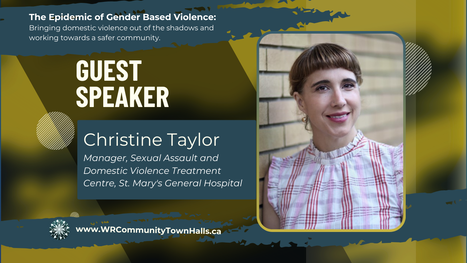
Christine Taylor, in her presentation, introduces the work of the sexual assault domestic violence team at Saint Mary's and Cambridge Hospital. She outlines their comprehensive approach, encompassing a 24/7 response team consisting of nurses and social workers. They provide a range of services, including crisis support, medical treatment, forensic evidence collection, and follow-up counselling, making them unique in Ontario for having both a social worker and nurse present for emergency cases.
Taylor highlights a disturbing trend observed since the COVID-19 pandemic: a significant increase in severe cases of intimate partner violence. Contrary to the common misconception that intimate partner violence is a minor, behind-closed-doors issue, she explains that they are now routinely encountering victims with serious, life-threatening injuries. These include cases of forced confinement, strangulation, sexual exploitation, and assaults with weapons. Such severe cases, once rare, have become increasingly common, indicating a shift towards more violent instances of intimate partner violence.
A critical aspect of Taylor's address is the focus on intimate partner violence as a public health crisis. She provides harrowing examples of the types of injuries they are seeing, including strokes from strangulation and amputations due to delayed medical care. These examples underscore the severe and long-lasting impact of such violence on victims' health. She stresses that this trend is not isolated to the Waterloo Region but is a province-wide issue, as confirmed by her interactions with managers of similar teams across Ontario.
Another significant point of Taylor's presentation is the emphasis on youth and intimate partner violence. She notes the alarming age at which victims are presenting to hospitals, some as young as 13 or 14. These young individuals face a complex array of challenges, including online harassment, stalking, and sexual exploitation. Taylor's remarks underscore the urgent need for early intervention and education about intimate partner violence among youth. She advocates for engaging youth in conversations about this issue and incorporating them into the movement against intimate partner violence.
Taylor also speaks about the complexities involved in assisting victims of intimate partner violence. She acknowledges the difficulties victims face in deciding to leave abusive relationships, dealing with post-separation violence, and navigating legal constraints like no-contact orders. She highlights the multifaceted nature of the support required, including the need for mental and emotional health support for survivors.
Additionally, Taylor mentions the Family Violence Project, which facilitates collaboration among various services dealing with intimate partner violence. This project allows for a coordinated, multi-disciplinary approach to supporting victims, emphasising the importance of integrated service delivery.
In conclusion, Taylor's address paints a comprehensive picture of the current state of intimate partner violence, emphasizing its severity and the critical need for a coordinated, multi-faceted response. Her focus on the alarming trends in youth violence and the public health implications of such violence underscores the urgency of addressing this issue at various levels, from individual support to broader societal engagement and policy initiatives.
Taylor highlights a disturbing trend observed since the COVID-19 pandemic: a significant increase in severe cases of intimate partner violence. Contrary to the common misconception that intimate partner violence is a minor, behind-closed-doors issue, she explains that they are now routinely encountering victims with serious, life-threatening injuries. These include cases of forced confinement, strangulation, sexual exploitation, and assaults with weapons. Such severe cases, once rare, have become increasingly common, indicating a shift towards more violent instances of intimate partner violence.
A critical aspect of Taylor's address is the focus on intimate partner violence as a public health crisis. She provides harrowing examples of the types of injuries they are seeing, including strokes from strangulation and amputations due to delayed medical care. These examples underscore the severe and long-lasting impact of such violence on victims' health. She stresses that this trend is not isolated to the Waterloo Region but is a province-wide issue, as confirmed by her interactions with managers of similar teams across Ontario.
Another significant point of Taylor's presentation is the emphasis on youth and intimate partner violence. She notes the alarming age at which victims are presenting to hospitals, some as young as 13 or 14. These young individuals face a complex array of challenges, including online harassment, stalking, and sexual exploitation. Taylor's remarks underscore the urgent need for early intervention and education about intimate partner violence among youth. She advocates for engaging youth in conversations about this issue and incorporating them into the movement against intimate partner violence.
Taylor also speaks about the complexities involved in assisting victims of intimate partner violence. She acknowledges the difficulties victims face in deciding to leave abusive relationships, dealing with post-separation violence, and navigating legal constraints like no-contact orders. She highlights the multifaceted nature of the support required, including the need for mental and emotional health support for survivors.
Additionally, Taylor mentions the Family Violence Project, which facilitates collaboration among various services dealing with intimate partner violence. This project allows for a coordinated, multi-disciplinary approach to supporting victims, emphasising the importance of integrated service delivery.
In conclusion, Taylor's address paints a comprehensive picture of the current state of intimate partner violence, emphasizing its severity and the critical need for a coordinated, multi-faceted response. Her focus on the alarming trends in youth violence and the public health implications of such violence underscores the urgency of addressing this issue at various levels, from individual support to broader societal engagement and policy initiatives.
- Rising Severity and Frequency of IPV Cases: In 2023, there is a significant increase in serious injuries related to intimate partner violence (IPV), including cases of strangulation, sexual exploitation, and assault with a weapon. This is a marked change from 15-20 years ago when such severe cases were rare.
- Public Health Crisis: IPV has evolved into a public health crisis, with victims suffering long-term, debilitating injuries such as stroke, amputation, and facial disfigurement. This severity reflects the escalating intensity of IPV cases.
- Youth and Online IPV Dynamics: There's an alarming trend of IPV among youth, starting as young as 13 years old. Modern IPV dynamics involve online harassment, stalking, and sexual exploitation, making it crucial to engage and educate youth on these issues.
- Comprehensive Support System: The Saint Mary's Hospital team, part of the Family Violence Project, offers a comprehensive approach to IPV, including medical, forensic, and counselling services, emphasizing the importance of community-based support and intervention.
- Challenges in Exiting Abusive Relationships: Exiting an abusive relationship is complex and multi-staged, often involving continued IPV issues post-separation, especially in cases with children. This highlights the need for ongoing support and intervention.
A Call for Action & Awareness: Jennifer Hutton
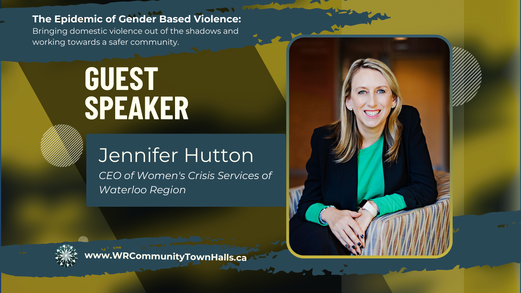
Jennifer Hutton, CEO of Women's Crisis Services of Waterloo Region, delivers a powerful message on the critical issue of domestic violence and femicide. She begins by highlighting the vital services provided by her organization, including safe shelters like Anselma House and Haven House, and transitional housing through Aspen Place. These facilities represent a significant portion of the violence against women's shelter beds in the province. Hutton notes the increasing duration of shelter stays due to the pandemic and affordable housing crisis, with some families staying for up to a year.
Hutton draws attention to the alarming rise in femicides in Ontario, with 55 incidents in less than a year. She stresses that this is a gendered issue, with women and girls more likely to be killed by intimate partners or family members. This contrasts with the pattern of male homicides, which often involve acquaintances or strangers. Hutton emphasizes that these deaths are both predictable and preventable, underscoring the importance of awareness and intervention.
The Women's Crisis Services also offer outreach services, assisting around 1100 individuals, including women and gender-diverse persons. These services are flexible and accessible, providing crucial support where it's needed. The organization's approach extends beyond shelter, incorporating programs like music therapy, child and youth programs, and addiction and mental health support.
Hutton also addresses the significant societal cost of domestic violence, noting its impact on emergency services and employers due to lost time and resources. She underscores the need for funding prevention and upstream solutions to mitigate these costs.
To raise awareness and encourage community action, Hutton mentions a symbolic walk event, where participants will walk six kilometres to represent the statistic that every six days, a woman in Canada is killed by an intimate partner. This event is part of a broader effort to move from awareness to action in tackling domestic violence.
In wrapping up, Hutton reiterates the connection between prolonged shelter stays and the affordable housing crisis, highlighting the need for more housing solutions. Her call to action is a powerful reminder of the ongoing battle against domestic violence and the collective effort required to address it effectively.
Hutton draws attention to the alarming rise in femicides in Ontario, with 55 incidents in less than a year. She stresses that this is a gendered issue, with women and girls more likely to be killed by intimate partners or family members. This contrasts with the pattern of male homicides, which often involve acquaintances or strangers. Hutton emphasizes that these deaths are both predictable and preventable, underscoring the importance of awareness and intervention.
The Women's Crisis Services also offer outreach services, assisting around 1100 individuals, including women and gender-diverse persons. These services are flexible and accessible, providing crucial support where it's needed. The organization's approach extends beyond shelter, incorporating programs like music therapy, child and youth programs, and addiction and mental health support.
Hutton also addresses the significant societal cost of domestic violence, noting its impact on emergency services and employers due to lost time and resources. She underscores the need for funding prevention and upstream solutions to mitigate these costs.
To raise awareness and encourage community action, Hutton mentions a symbolic walk event, where participants will walk six kilometres to represent the statistic that every six days, a woman in Canada is killed by an intimate partner. This event is part of a broader effort to move from awareness to action in tackling domestic violence.
In wrapping up, Hutton reiterates the connection between prolonged shelter stays and the affordable housing crisis, highlighting the need for more housing solutions. Her call to action is a powerful reminder of the ongoing battle against domestic violence and the collective effort required to address it effectively.
- Escalating Femicide Rates: In Ontario, there has been a disturbing increase in femicides, with 55 cases in 48 weeks in the current year. This highlights the urgent need to address domestic violence as a public health issue.
- Domestic Violence as a Public Crisis: Domestic violence, often underreported, has a significant societal cost, impacting emergency services, employers, and ultimately leading to the loss of lives.
- Women's Crisis Services' Role: Women's Crisis Services of Waterloo Region provides comprehensive support, including safe shelter, transitional housing, outreach services, and various programs to support women and gender-diverse individuals facing domestic violence.
- Increased Shelter Demand and Housing Crisis: The pandemic and affordable housing crisis have prolonged shelter stays, underlining the need for more resources and housing solutions.
- Community Awareness and Participation: Emphasizing the importance of public awareness and community action, Jennifer Hutton calls for engagement in initiatives like awareness walks to symbolize the severity of domestic violence.
Survivor Insights on Coercive Control & Domestic Violence: Sarah Robertson

Sarah Robertson, speaking from her personal experience as a survivor of domestic violence, provides a unique and poignant perspective on the issue. She begins by addressing the concept of coercive control, a form of manipulation and abuse that often starts subtly and escalates over time. Robertson reflects on her initial inability to recognize the signs of abuse, particularly 'love bombing' – a deceptive showering of affection used for manipulation.
She points out the gradual nature of coercive control, which starts with small, often unnoticeable actions that slowly isolate the victim from their support system. This isolation is a deliberate tactic used by the abuser to gain control and prevent others from noticing the abuse. Robertson highlights the common experience of self-doubt and confusion among victims, exacerbated by tactics like gaslighting.
Robertson's account also touches on the complexities that arise when children are involved. She discusses the heightened sense of fear and responsibility she felt not only for her safety but also for her children. This added dimension makes escaping from an abusive relationship even more complicated and perilous.
She emphasizes the critical role of support services during these times, such as Women's Crisis Services and distress lines, which provide essential guidance and emotional support. Robertson also discusses the challenges of navigating the family court system as a survivor of domestic violence, a process that can be daunting and overwhelming.
In her conclusion, Robertson offers practical advice for safety planning, including documenting interactions, altering routines, and establishing support networks. She stresses the importance of setting clear boundaries and acknowledges the long and challenging journey of recovery from domestic violence. Robertson’s insights underscore the necessity of community support and the importance of projects and services that aid survivors.
Finally, she addresses the difficulty of initiating conversations about domestic violence with loved ones. Robertson advocates for a gentle approach, emphasizing the importance of being a supportive, non-judgmental presence for those who may be experiencing domestic violence. Her story is a powerful testament to the resilience of survivors and the crucial need for awareness, support, and actionable change in addressing domestic violence.
She points out the gradual nature of coercive control, which starts with small, often unnoticeable actions that slowly isolate the victim from their support system. This isolation is a deliberate tactic used by the abuser to gain control and prevent others from noticing the abuse. Robertson highlights the common experience of self-doubt and confusion among victims, exacerbated by tactics like gaslighting.
Robertson's account also touches on the complexities that arise when children are involved. She discusses the heightened sense of fear and responsibility she felt not only for her safety but also for her children. This added dimension makes escaping from an abusive relationship even more complicated and perilous.
She emphasizes the critical role of support services during these times, such as Women's Crisis Services and distress lines, which provide essential guidance and emotional support. Robertson also discusses the challenges of navigating the family court system as a survivor of domestic violence, a process that can be daunting and overwhelming.
In her conclusion, Robertson offers practical advice for safety planning, including documenting interactions, altering routines, and establishing support networks. She stresses the importance of setting clear boundaries and acknowledges the long and challenging journey of recovery from domestic violence. Robertson’s insights underscore the necessity of community support and the importance of projects and services that aid survivors.
Finally, she addresses the difficulty of initiating conversations about domestic violence with loved ones. Robertson advocates for a gentle approach, emphasizing the importance of being a supportive, non-judgmental presence for those who may be experiencing domestic violence. Her story is a powerful testament to the resilience of survivors and the crucial need for awareness, support, and actionable change in addressing domestic violence.
- Coercive Control as a Core Aspect of Domestic Violence: Sarah Robertson highlights the insidious nature of coercive control, often beginning subtly with 'love bombing' and progressing to isolation and manipulation.
- Misconceptions and Lack of Awareness: Robertson emphasizes how domestic violence can be misunderstood or missed entirely, particularly in cases where physical violence is not immediately apparent.
- Impact on Children and Family Dynamics: The complexities of domestic violence are magnified when children are involved, deciding to leave an abusive relationship even more challenging.
- Importance of Support Systems: Accessing support services like crisis lines and community programs is crucial for victims, particularly during separation, which is often the most dangerous time.
- Navigating the Family Court System: The challenge of conveying the experience of domestic violence in family court settings and the positive changes in laws and practices that aid survivors.
Proactive Policing in IPV: Amy Hachborn
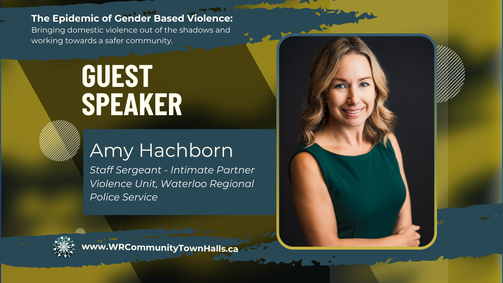
Staff Sergeant Amy Hachborn from the Waterloo Regional Police Services provides an insightful overview of the department's innovative approaches to addressing intimate partner violence (IPV). Located in the Camino Health and Well-Being building, the IPV branch operates in a non-traditional police setting, which Hachborn believes is essential for making victims feel comfortable and safe.
Hachborn highlights the branch's significant workload, noting that it handles a quarter of the total charges of the Waterloo Regional Police Service. This high volume underscores the pervasive issue of IPV in the region. To manage this, the branch is expanding, adding new investigators in 2024 to better support victims and manage cases.
A key focus of Hachborn's discussion is the branch's preventative approach to IPV. In collaboration with Women's Crisis Services of Waterloo Region, they initiated a pilot project aimed at early intervention in non-criminal IPV incidents. By identifying couples with multiple IPV calls within a specific period, the program seeks to intervene before situations escalate to criminal offences. This approach involves a detective and an outreach worker collaborating to provide education and support to the involved parties. The positive feedback and reduction in subsequent calls and charges among participating couples demonstrate the success of this strategy.
Hachborn also emphasizes the importance of education in their approach to IPV. By informing the community about the signs of IPV and the potential legal consequences of criminal charges, the branch aims to foster a more proactive and supportive environment. This educational component is crucial for young people, who may not fully grasp the implications of IPV-related criminal charges.
In response to a question about femicide, Hachborn assures that if the offender is alive following such an incident, they are charged with homicide. This response highlights the seriousness with which the police service treats IPV cases, especially those with the most tragic outcomes.
Overall, Hachborn's presentation sheds light on the proactive and collaborative efforts of the Waterloo Regional Police Services in addressing IPV. Their focus on early intervention, victim comfort, and community education represents a comprehensive approach to tackling this complex social issue.
Hachborn highlights the branch's significant workload, noting that it handles a quarter of the total charges of the Waterloo Regional Police Service. This high volume underscores the pervasive issue of IPV in the region. To manage this, the branch is expanding, adding new investigators in 2024 to better support victims and manage cases.
A key focus of Hachborn's discussion is the branch's preventative approach to IPV. In collaboration with Women's Crisis Services of Waterloo Region, they initiated a pilot project aimed at early intervention in non-criminal IPV incidents. By identifying couples with multiple IPV calls within a specific period, the program seeks to intervene before situations escalate to criminal offences. This approach involves a detective and an outreach worker collaborating to provide education and support to the involved parties. The positive feedback and reduction in subsequent calls and charges among participating couples demonstrate the success of this strategy.
Hachborn also emphasizes the importance of education in their approach to IPV. By informing the community about the signs of IPV and the potential legal consequences of criminal charges, the branch aims to foster a more proactive and supportive environment. This educational component is crucial for young people, who may not fully grasp the implications of IPV-related criminal charges.
In response to a question about femicide, Hachborn assures that if the offender is alive following such an incident, they are charged with homicide. This response highlights the seriousness with which the police service treats IPV cases, especially those with the most tragic outcomes.
Overall, Hachborn's presentation sheds light on the proactive and collaborative efforts of the Waterloo Regional Police Services in addressing IPV. Their focus on early intervention, victim comfort, and community education represents a comprehensive approach to tackling this complex social issue.
- Strategic Location for Victim Comfort: Staff Sergeant Amy Hachborn emphasizes the importance of the Waterloo Regional Police Services' Intimate Partner Violence branch being located in a non-police building to provide a neutral, comfortable environment for victims.
- High Volume of IPV Cases and Charges: The branch is one of the busiest in the region, dealing with a significant portion of the police service's total charges, highlighting the prevalence of intimate partner violence.
- Focus on Early Intervention and Prevention: A pilot project with Women's Crisis Services exemplifies a preventative approach, aiming to intervene in non-criminal intimate partner violence cases before they escalate. The initiative led to a reduction in calls for service and charges, with participants expressing overall satisfaction, demonstrating the effectiveness of early intervention.
- Education as a Key Component: The branch prioritizes community education on intimate partner violence, helping people understand the potential consequences of criminal charges and providing information on available support services.
Invisible Wounds - Brain Injuries & IPV: Halina (Lin) Haag
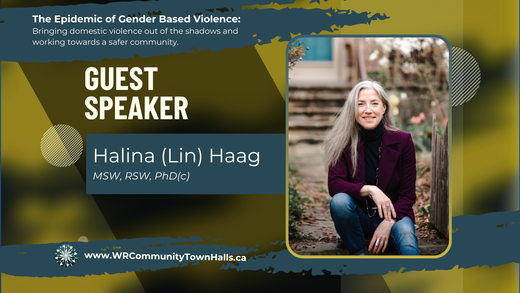
Lin Haag, in her insightful presentation, sheds light on a lesser-known yet critical aspect of intimate partner violence (IPV) – the prevalence of brain injuries among survivors. Haag ephasizes the 'perfect storm' effect in IPV situations, where the most common physical assaults involve hits to the head, face, or neck. These injuries often lead to brain damage, particularly affecting areas responsible for executive functions like planning, decision-making, and impulse control. This damage significantly hinders survivors' ability to plan and execute an exit from abusive relationships.
Haag points out the disturbing statistic that up to 75% of women who survive physical IPV may suffer from brain injuries. This figure is as prevalent as breast cancer, yet brain injuries in IPV survivors receive far less attention, funding, and support. There's a notable lack of awareness in the healthcare community and traditional IPV support systems about these injuries and their impact on survivors.
To address this gap, Haag discusses a web-based toolkit developed at a research lab in Toronto. This resource is designed to assist frontline workers in recognizing and supporting IPV survivors with traumatic brain injuries. The toolkit includes information on brain injury symptoms, effects, and support strategies, and it is freely accessible online for use and distribution.
Haag also touches upon the Pink Brain Pledge initiative, which encourages women survivors to donate their brains post-mortem for research. This research aims to understand better and address brain injuries resulting from IPV. The initiative is in its early stages but represents a significant step towards acknowledging and tackling the hidden epidemic of brain injuries in IPV survivors.
In her presentation, Haag calls for increased awareness and education about the intersection of brain injuries and IPV. She advocates for incorporating this knowledge into medical care and legal practices, emphasizing that understanding and addressing brain injuries is crucial for effectively supporting IPV survivors. Haag's message underscores the need for a comprehensive approach that considers the multifaceted impacts of IPV on survivors.
Haag points out the disturbing statistic that up to 75% of women who survive physical IPV may suffer from brain injuries. This figure is as prevalent as breast cancer, yet brain injuries in IPV survivors receive far less attention, funding, and support. There's a notable lack of awareness in the healthcare community and traditional IPV support systems about these injuries and their impact on survivors.
To address this gap, Haag discusses a web-based toolkit developed at a research lab in Toronto. This resource is designed to assist frontline workers in recognizing and supporting IPV survivors with traumatic brain injuries. The toolkit includes information on brain injury symptoms, effects, and support strategies, and it is freely accessible online for use and distribution.
Haag also touches upon the Pink Brain Pledge initiative, which encourages women survivors to donate their brains post-mortem for research. This research aims to understand better and address brain injuries resulting from IPV. The initiative is in its early stages but represents a significant step towards acknowledging and tackling the hidden epidemic of brain injuries in IPV survivors.
In her presentation, Haag calls for increased awareness and education about the intersection of brain injuries and IPV. She advocates for incorporating this knowledge into medical care and legal practices, emphasizing that understanding and addressing brain injuries is crucial for effectively supporting IPV survivors. Haag's message underscores the need for a comprehensive approach that considers the multifaceted impacts of IPV on survivors.
- Prevalence of Brain Injuries in IPV: Lin Haag brings attention to the alarming statistic that up to 75% of women survivors of physical intimate partner violence (IPV) have probable brain injuries, a rate comparable to the prevalence of breast cancer.
- Understanding the 'Perfect Storm' Effect: Haag describes the 'perfect storm' effect in IPV, where most assaults involve hits to the head, face, or neck, leading to brain injuries that impact executive functions crucial for planning and executing an escape from abusive situations.
- Lack of Awareness and Support: There is a critical gap in awareness and support for IPV survivors with brain injuries, both in the healthcare community and IPV support systems.
- Development of Supportive Tools: Haag introduces a web-based toolkit designed to help frontline workers recognize and address traumatic brain injuries among IPV survivors.
- The Pink Brain Pledge Initiative: An initiative encouraging women survivors to donate their brains for research post-mortem, to further understand and address the issue of brain injuries caused by IPV.
The Crucial Intersection of Family Violence & Family Courts: David Morneau

David Morneau, with nearly 25 years of experience as a family lawyer, addresses the intersection of family law and family violence, emphasizing the need for reform and innovation within the legal system. He begins by outlining the recent legislative developments that have provided a more expansive definition of family violence, incorporating not just physical abuse but also psychological, financial, and coercive control aspects.
Morneau points out that before these legislative changes, the recognition of family violence in family law often depended on tangible evidence like police reports or medical records. The new definitions in federal and provincial laws now acknowledge a broader spectrum of abusive behaviours. This change marks a significant shift in understanding and addressing family violence in the context of family law.
Highlighting a critical gap in the legal system, Morneau notes that unlike accredited family mediators and collaborative professionals, lawyers operating within the court system are not required to undergo extensive training in intimate partner violence and coercive control. This discrepancy, he argues, is a significant deficiency that needs correction, especially given the high emotion and conflict nature of court cases involving family violence.
Morneau also discusses the impact of Keira's Law, named after a young victim of family violence, which now requires judges to have current and ongoing training in intimate partner violence and coercive control. He underscores the importance of this law by citing cases with clear red flags that were previously overlooked due to gaps in training and awareness.
In his advocacy for a safer justice system, Morneau calls for comprehensive education and planning for all professionals within the family justice system. He stresses the need to understand the complex dynamics of family violence to provide better support and protection for victims. Morneau concludes by emphasizing the potential for collaborative family law processes to address family violence effectively, highlighting the expertise of professionals trained in intimate partner violence and coercive control outside the court system. His presentation underscores the need for a more informed, sensitive, and proactive approach to family violence within the family law context.
Morneau points out that before these legislative changes, the recognition of family violence in family law often depended on tangible evidence like police reports or medical records. The new definitions in federal and provincial laws now acknowledge a broader spectrum of abusive behaviours. This change marks a significant shift in understanding and addressing family violence in the context of family law.
Highlighting a critical gap in the legal system, Morneau notes that unlike accredited family mediators and collaborative professionals, lawyers operating within the court system are not required to undergo extensive training in intimate partner violence and coercive control. This discrepancy, he argues, is a significant deficiency that needs correction, especially given the high emotion and conflict nature of court cases involving family violence.
Morneau also discusses the impact of Keira's Law, named after a young victim of family violence, which now requires judges to have current and ongoing training in intimate partner violence and coercive control. He underscores the importance of this law by citing cases with clear red flags that were previously overlooked due to gaps in training and awareness.
In his advocacy for a safer justice system, Morneau calls for comprehensive education and planning for all professionals within the family justice system. He stresses the need to understand the complex dynamics of family violence to provide better support and protection for victims. Morneau concludes by emphasizing the potential for collaborative family law processes to address family violence effectively, highlighting the expertise of professionals trained in intimate partner violence and coercive control outside the court system. His presentation underscores the need for a more informed, sensitive, and proactive approach to family violence within the family law context.
- New Legal Definitions of Family Violence: David Morneau discusses the introduction of comprehensive definitions of family violence in the Divorce Act and the Children's Law Reform Act, acknowledging not only physical but also psychological, financial, and coercive control aspects of violence.
- The Need for Reform in Family Law: Morneau emphasizes the necessity for reform and innovation in family law, particularly in the context of family violence and its recognition within the legal system.
- Training Gaps in the Legal Profession: A striking point is the lack of required intimate partner violence and coercive control training for lawyers in the court system, contrasted with the requirements for family mediators and collaborative professionals.
- Keira's Law and Judicial Training: Morneau highlights the significance of Keira's Law, which mandates ongoing training for judges in intimate partner violence and coercive control, inspired by tragic cases that underscored gaps in the system.
- Advocacy for Comprehensive Education and Planning: Morneau advocates for comprehensive education and thoughtful planning for all professionals within the family justice system, emphasizing the importance of understanding the complexities of family violence.
Empathy & Understanding: Janet de Gazon

Janet de Gazon, representing Camino Wellbeing and Mental Health, underscores the need for empathy and understanding in addressing the barriers faced by survivors of abusive relationships. She emphasises that questions like "Why didn't you just leave?" often carry unintended judgment and shame, shifting the responsibility onto the survivor instead of the abuser. De Gazon advocates for reframing these questions to focus on the barriers to leaving and what can be done to enhance safety.
She categorizes the barriers to leaving an abusive relationship into several themes, such as fear (including fear for children's safety), economic abuse, mental health and wellbeing, and societal judgment. De Gazon points out the complexity of these barriers, highlighting how they can make it difficult and sometimes unsafe to leave an abusive relationship.
De Gazon introduces Camino as a unified effort of various organizations to provide holistic support across different life stages and specific support for gender-based violence survivors. She speaks about the mental exhaustion survivors endure and the impact of navigating the legal system and potential brain injuries, as discussed by other speakers.
She also emphasizes the importance of community resources and training for those who want to support survivors. The “Neighbors, Friends, and Family” program by the University of Western is mentioned as an invaluable resource for this purpose. De Gazon then outlines the range of services offered by Camino, from individual and family counselling to specific support groups for survivors, highlighting their inclusive approach to catering to diverse communities, including LGBTQIA+ individuals and newcomers.
De Gazon's presentation brings to light the multifaceted challenges faced by survivors of abuse and the critical role of empathy and comprehensive support systems in addressing these challenges. Her insights reflect a deep understanding of the nuances involved in abusive relationships and the need for community-wide engagement to provide effective support.
She categorizes the barriers to leaving an abusive relationship into several themes, such as fear (including fear for children's safety), economic abuse, mental health and wellbeing, and societal judgment. De Gazon points out the complexity of these barriers, highlighting how they can make it difficult and sometimes unsafe to leave an abusive relationship.
De Gazon introduces Camino as a unified effort of various organizations to provide holistic support across different life stages and specific support for gender-based violence survivors. She speaks about the mental exhaustion survivors endure and the impact of navigating the legal system and potential brain injuries, as discussed by other speakers.
She also emphasizes the importance of community resources and training for those who want to support survivors. The “Neighbors, Friends, and Family” program by the University of Western is mentioned as an invaluable resource for this purpose. De Gazon then outlines the range of services offered by Camino, from individual and family counselling to specific support groups for survivors, highlighting their inclusive approach to catering to diverse communities, including LGBTQIA+ individuals and newcomers.
De Gazon's presentation brings to light the multifaceted challenges faced by survivors of abuse and the critical role of empathy and comprehensive support systems in addressing these challenges. Her insights reflect a deep understanding of the nuances involved in abusive relationships and the need for community-wide engagement to provide effective support.
- Emphasizing Empathy in Addressing Abuse: Janet de Gazon from Camino highlights the importance of empathy and compassion in understanding the complexities faced by survivors of abuse, challenging the often judgmental question, "Why didn't you just leave?"
- Identification of Key Barriers: De Gazon identifies various barriers to leaving an abusive relationship, including fear for personal safety and that of children, economic constraints, mental health challenges, and societal judgment.
- Unified Support Approach: Camino, a unification of several support organizations, offers a range of services from birth to seniors, including specific support for those experiencing gender-based violence.
- The Importance of Mental Health and Wellbeing: Acknowledging the mental exhaustion and emotional toll on survivors, de Gazon stresses the significance of understanding these impacts when providing support.
- Community Resources and Training: She also highlights resources like "Neighbors, Friends, and Family" for community training and the broad spectrum of services Camino offers, including relationship support, counselling, and group workshops.
Discussion & Audience Response
After the panellists had shared their insights, Rob facilitated a deeper dive into the topics raised by the speakers. This interactive session also included audience participation through questions and lively discussions. Below are some of the key moments and takeaways from this segment.
Regional Councillor Colleen James emphasized the need for a holistic, systemic approach to address the epidemic of gender-based violence and intimate partner violence. She highlighted ongoing advocacy efforts, including discussions with ministers and elected officials from various municipalities, to recognize this issue as an epidemic and to develop a concrete plan of action with clear implementation and accountability mechanisms. James mentioned a recent collaboration between federal and provincial authorities and underlined the importance of revisiting the inquest from 2022 and its 85 action points. A key focus of her advocacy is the re-establishment of a previously disbanded commission and ensuring adequate funding for education and direct agency support to overcome distribution barriers. She also pointed out the necessity of collecting accurate data, particularly disaggregated data, to address the nuances of black, indigenous, and racialized communities affected by this epidemic. James is actively involved in a policing task force and a joint social justice policy task force, advocating for changes within the justice system, including education for judges and improvements in how cases are handled by Crown attorneys. James concluded by emphasizing the ongoing advocacy for greater accountability, the importance of education, and the need for investment in transitional housing, especially considering the unique challenges faced in rural townships and areas.
Lin Haag followed up here earlier comments with a comparison to NHL player Sidney Crosby who has missed time due to concussions. Lin observed that “ …for every one NHL hockey player who will suffer a concussion on the ice playing the game that he loves, 4500 women will be exposed to probable brain injury as a result of exposure to intimate partner violence. That's one compared to 4500.”
Several audience members responded to the speakers during and after the discussion. A few of these comments are presented below:
|
“In the 1980s, I had to utilize the services of Anselma House, which was then situated on Duke Street. The session tonight was informative and showed the progress made since my experience. At that time, few resources were available for women trapped in violent circumstances. I recall a lawyer questioning why I stayed with such a volatile man, making me feel ashamed instead of providing guidance on how to leave.”
- Anonymous
“Would like to see more preventative/proactive measures and strategies (e.g. SASCWR Male Allies program) made much more common and universal. The system we have is obviously not protecting so many people, and we need to be doing better to develop a more empathetic and compassionate community, and that can come from many angles, whether supportive housing or better understanding of relationships and understanding healthy relationships and communication or addiction or financial services. There are so many factors that need to be addressed.”
Anonymous
|

